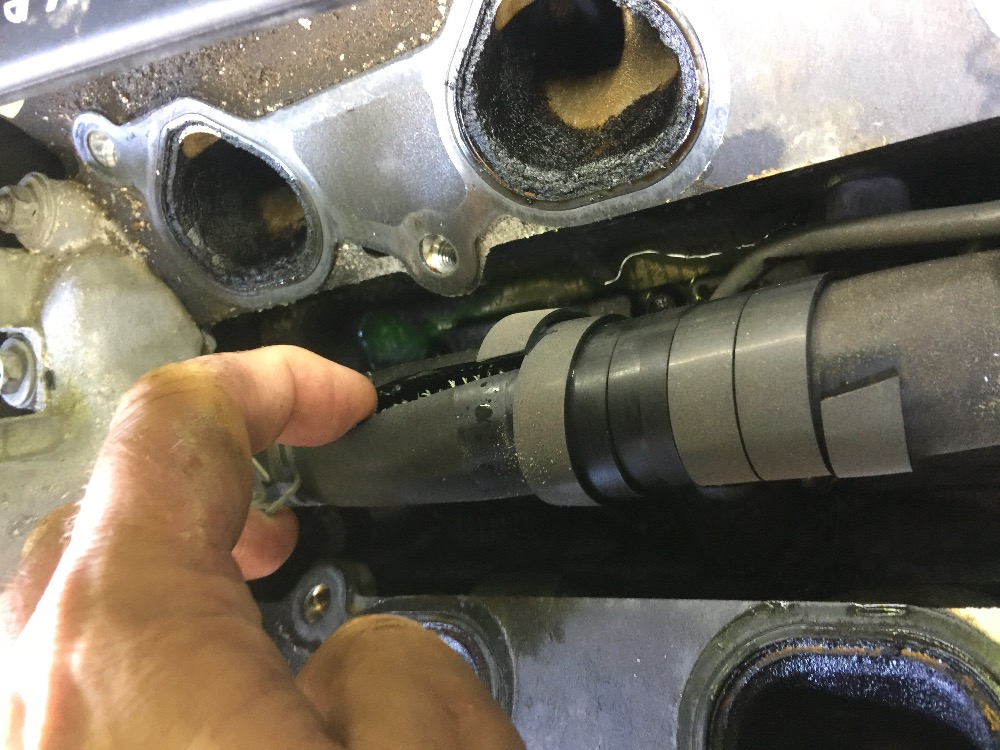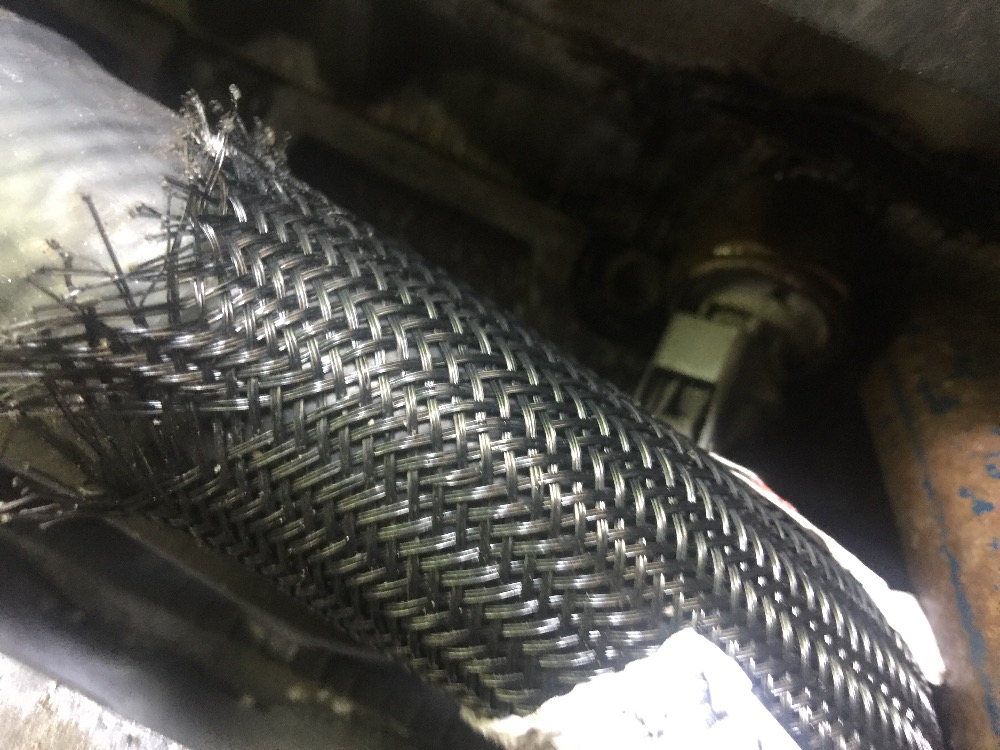*** Restricting New Posts to SD Premium Members ONLY *** (09 May 2025)
Just made a new account? Can't post? Click above.
2000 Toyota Solara 3.0 V6 massive coolant leak
- popoften
-
Topic Author
- Offline
- Elite Member
-

- Posts: 226
- Thank you received: 22
Its Pop again, and first off I would like to thank you guys for all the help you have been to me over the years. I always try to post back with results and my sincere, heartfelt thanks, but if I have forgotten to do so on any of my threads let me here say THANK YOU to all you guys who make this IMO the best repair forum o the internet.
So here is the latest: My daughter's Solara has a pretty big coolant leak. She says she was driving and heard a "POP" and then saw steam coming up from the hood. She stopped immediately. She said the temp gauge stayed in the middle of the range and did not get anywhere near the red hi-temp zone.
When I pour water into the pressure cap opening, the water gushes out just as fast as I can pour it in and cascades down the back of the engine, from very near the top of the engine, primarily on the drivers side. . My guess is the rubber bypass hose that goes from the opening under the pressure cap over to the back of the thermostat housing has completely let go; as I cannot see any other leaks from anywhere else.
The problem is how to verify it visually. It looks like the hose runs under the lower intake manifold. I've tried to look using my borescope, but can't really see any part of the bypass hose. It looks like I am going to have to remove the intake and related top-engine stuff just to get a look at it.
Any ideas?
Thanks, Pop
Please Log in or Create an account to join the conversation.
- PDM
-

- Offline
- Elite Member
-

- Posts: 192
- Thank you received: 56
Please Log in or Create an account to join the conversation.
- guafa
-
- Offline
- Platinum Member
-

- Posts: 477
- Thank you received: 80
I think you should also look for the root cause of broken hose.
Is it due to a bad water pump? Is it due to a plugged thermostat?
Please Log in or Create an account to join the conversation.
- popoften
-
Topic Author
- Offline
- Elite Member
-

- Posts: 226
- Thank you received: 22
Please Log in or Create an account to join the conversation.
- popoften
-
Topic Author
- Offline
- Elite Member
-

- Posts: 226
- Thank you received: 22
Please Log in or Create an account to join the conversation.
- Tyler
-

- Offline
- Moderator
-

- Full time HACK since 2012
- Posts: 6039
- Thank you received: 1518
The best idea I have is a leak in the hose between the water outlet and the thermostat housing. Parts diagram for reference, part #21:
I've seen the water outlet gaskets seep, but never gush the way you're describing. The mirror may be your best bet - or a cheap borescope! Never seen that hose fail, but there's a first time for everything. :silly:
Please Log in or Create an account to join the conversation.
- popoften
-
Topic Author
- Offline
- Elite Member
-

- Posts: 226
- Thank you received: 22
Before I started working on this thing The check engine light was on and I pulled the codes using my somewhat rudimentary INNOVA (displays SOME freeze frame data for some, not all codes) code scanner.
PCM had stored a P0325 and P0330 code having to do with the knock sensors. There was no freeze frame data for these codes. I figure while I have the top of the engine torn off it might be a good time to check those sensors. I did not feel any misfires back when the car was running.
Visual inspection reveals that one of the sensors seems to be damaged and if I had to guess it looks like they’ve been replaced before but I’m not at all sure about that. Are there tests that I can do on these knock sensors with the engine partially disassembled/not running as it is ?
Thanks, Pop
Please Log in or Create an account to join the conversation.
- guafa
-
- Offline
- Platinum Member
-

- Posts: 477
- Thank you received: 80
Please Log in or Create an account to join the conversation.
- guafa
-
- Offline
- Platinum Member
-

- Posts: 477
- Thank you received: 80
I'm afraid you have not found root cause yet.
Please Log in or Create an account to join the conversation.
- popoften
-
Topic Author
- Offline
- Elite Member
-

- Posts: 226
- Thank you received: 22
Please Log in or Create an account to join the conversation.
- guafa
-
- Offline
- Platinum Member
-

- Posts: 477
- Thank you received: 80
I'd say is the same results, since you are testing inside chambers, which are connected with intake manifold through the valves (which are closed when you perform the test).
Please Log in or Create an account to join the conversation.
- guafa
-
- Offline
- Platinum Member
-

- Posts: 477
- Thank you received: 80
Please Log in or Create an account to join the conversation.
- popoften
-
Topic Author
- Offline
- Elite Member
-

- Posts: 226
- Thank you received: 22
Please Log in or Create an account to join the conversation.
- guafa
-
- Offline
- Platinum Member
-

- Posts: 477
- Thank you received: 80
You can also have a leak that only "appears" when engine is hot (which you can not detect, because you are not able to warm up the engine).
Please Log in or Create an account to join the conversation.
- guafa
-
- Offline
- Platinum Member
-

- Posts: 477
- Thank you received: 80
I suggest you to fill coolant passages with coolant and observe for air bubbles.
Please Log in or Create an account to join the conversation.
- Tyler
-

- Offline
- Moderator
-

- Full time HACK since 2012
- Posts: 6039
- Thank you received: 1518
BUT, that all depends on your leak down results. :silly: You can definitely do a leak down test with the intake off, like guafa said. Filling the cooling system and looking for bubbles would be best. If that's not an option, you can leave the tester installed for a minute or two at full pressure and remove the radiator cap. If you get a pop of pressure, game over.
Alternately, if you have a cooling system pressure tester, you can have it installed on the radiator while leak down testing. Building pressure is a failure.
Please Log in or Create an account to join the conversation.
- popoften
-
Topic Author
- Offline
- Elite Member
-

- Posts: 226
- Thank you received: 22
Please Log in or Create an account to join the conversation.
- popoften
-
Topic Author
- Offline
- Elite Member
-

- Posts: 226
- Thank you received: 22
I guess I am wondering at this point if I dare attempt the job. According to the Haynes Guide it looks nasty. Apparently you have to dig into the timing system as well. Or maybe the thing to do is look around for a decent used engine and bolt that in.
What do you guys think?
~ Pop
Please Log in or Create an account to join the conversation.
- Tyler
-

- Offline
- Moderator
-

- Full time HACK since 2012
- Posts: 6039
- Thank you received: 1518
A leaking intake valve is definitely a problem, but doesn't account for your blown hose. :huh: Plus, I've never seen a valve leak on one of these 3.0L engines. They have their problems, sure, but leaking valves isn't one of them.
When you say you repeated the test about six times, did you also roll the engine over after every attempt? Because I've been burned by leak down testing before, when a bit of carbon finds its way onto a valve while hand cranking an engine (for whatever reason). Spin it over a few times, and the leak disappeared.
If you didn't get any bubbles in the cooling system, then I'd say reassemble and run a chemical test. If that passes, let it ride.
If you decide to do head gaskets, it's not terrible. The timing belt is one of the easiest out there - the belts themselves are pre-marked so you can't get it wrong. :silly: The rough part will be the exhaust manifold nuts. They love to seize/round/break studs off.
Please Log in or Create an account to join the conversation.
- popoften
-
Topic Author
- Offline
- Elite Member
-

- Posts: 226
- Thank you received: 22
I think I will just put the motor back together and run the chemical tests as you say. It is pretty clear I cant replicate the intrusion of exhaust gases into the cooling system with this approach.
I REALLY appreciate your guidance Tyler! ANd that holds true for all you guys. You are the best.
Please Log in or Create an account to join the conversation.



